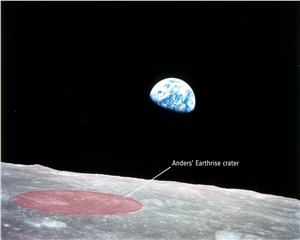



When the European Space Agency’s Jupiter Icy Moons Explorer (Juice) flew past our Moon in August 2024, its Radar for Icy Moon Exploration (RIME) instrument listened to radio wave echoes to reveal the height of the lunar surface.
The comparison slider below matches RIME’s first-ever ‘radargram’ with an elevation model from NASA’s Lunar Orbiter Laser Altimeter (LOLA). The bright pink-to-yellow line that wiggles across the dark purple background traces out the height of the Moon’s surface. The bumps and dips in these RIME data clearly match up with the height of the land in LOLA’s elevation map.
Preparing RIME for Jupiter’s icy moons
The lunar flyby provided a great opportunity to test out all of Juice’s ten science instruments on a solid surface in space for the first time. But it was crucial for RIME, as electronic noise within the rest of the spacecraft is unexpectedly disturbing the sensitive device.

A Global and Regional Analysis: Focus on Platform, Battery Type, Power, and Country Level Analysis
Download free sample pagesDuring the flyby of the Moon, RIME was given eight minutes to observe totally alone, with other instruments either switched off or set to quiet mode.
This was the first chance during Juice’s journey to Jupiter for RIME scientists to check how the electronic noise affects the performance of their instrument. Based on the data collected, they have spent many months working on an algorithm to correct the issue. The beautiful new view indicates just how successful they have been.
RIME’s task at Jupiter is to peer below the icy surfaces of moons Europa, Ganymede and Callisto to map the invisible rocky layers below. Though our own Moon has no icy surface, the successful mapping of it by RIME demonstrates that the radar instrument is up to the job.
An iconic patch of the Moon
What makes this image extra special is that it captures the same region photographed by NASA astronaut William Anders on 24 December 1968 during the Apollo 8 mission.
Anders’ spontaneous Earthrise photo became so iconic of the Apollo programme that the biggest crater, in the foreground of the image, was renamed from ‘Pasteur T’ to ‘Anders’ Earthrise’.
Coming up for Juice is a flyby of Venus next month. This is a purely operational manoeuvre, making use of Venus’s gravity to give Juice a boost on its journey to Jupiter. During the flyby, no instruments will be switched on – after all, they’re designed to work at chilly Jupiter rather than toasty Venus.
RIME science is led by the University of Trento. The instrument was built by a consortium led by Thales Alenia Space Italia under the responsibility of the Italian Space Agency (ASI) and with contributions from NASA's Jet Propulsion Laboratory.